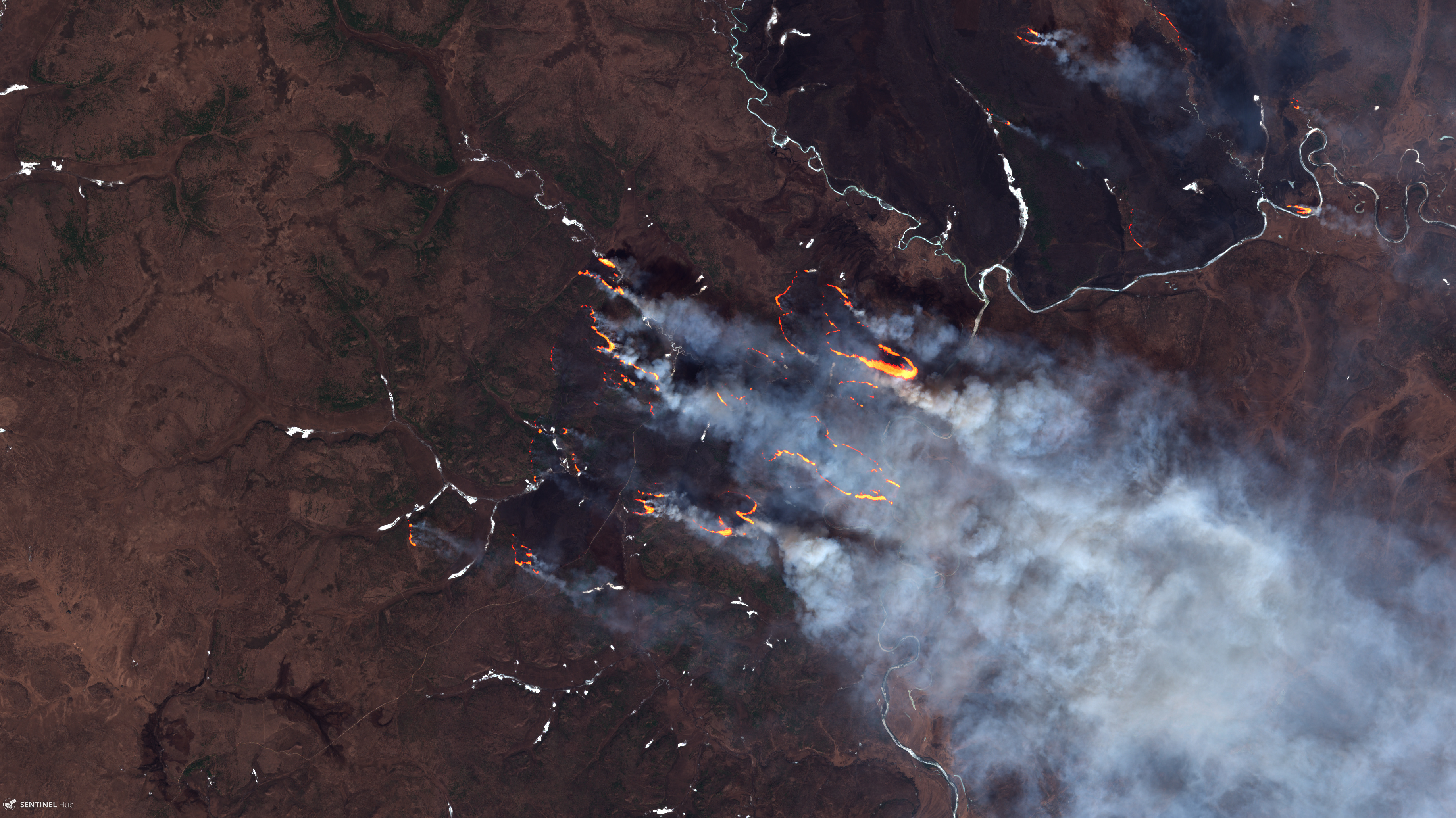The Arctic Is on Fire, and It Might Be Creating a Vicious Climate ‘Feedback Loop’

Credit to Author: Madeleine Gregory| Date: Mon, 29 Jul 2019 16:26:42 +0000
Wildfires have been raging across the Arctic for over a month now, releasing huge amounts of greenhouse gases into the atmosphere. Now, scientists worry that the fires are contributing to a climate change feedback loop that could make Arctic blazes more common.
In June, unprecedented fires burned across the Arctic, breaking emissions records. The fires have continued to grow, spreading to other parts of Siberia and Alaska, according to Mark Parrington, a senior scientist working on wildfire emissions at the European Center for Medium-Range Weather Forecasts (ECMWF). As they grow, the fires are dumping so much smoke into the atmosphere that it can be seen from space.
The smoke has already blanketed some Russian cities, making it hard to breathe. According to the Moscow Times, local residents have started a Change.org petition to pressure authorities to declare a state of emergency. The petition currently has over 400,000 signatures.
The smoke-filled air is only part of the problem. The emissions spewed into the atmosphere by these massive fires contribute to a climate change feedback loop that scientists worry could mean even more Arctic blazes in the future.
The fires are burning through peatlands, filled with carbon-rich organic matter. Peatlands are usually waterlogged, which serves as natural fire protection. When a warmer climate dries them out, though, peatlands can ignite and burn for months, years, or even decades. They don’t always produce massive flames, but in terms of how much fuel they eat up, peat fires are the biggest fires we know of.
Thomas Smith, professor at geography at the London School of Economics, said “there is an increased confidence” that the Arctic fires are indeed peat fires burning down into the soil, judging by their behavior.
“Peat fires burn ‘old’ carbon,” Smith said in an email, meaning that the carbon has taken thousands of years to accumulate. “So in a few weeks, a fire can burn through hundreds of years worth of carbon sequestration.”
In other words, Smith said, these fires are not carbon-neutral. More fires contribute to faster climate change, which in turn creates ideal conditions for more Arctic blazes.
“These greenhouse gas emissions (which are not offset by future regrowth) will lead to warming, and warming will increase the likelihood of peat soils being drier earlier in the summer and therefore more likely to burn…. In turn leading to more greenhouse gas emissions,” Smith said. “It is a classic positive feedback loop.”
Not only are these fires contributing to climate change, they can harm local ecosystems too, exposing vegetation to harsh chemicals and threatening animal populations, according to a 2018 paper by Smith published in the International Journal of Wildland Fire.
According to a 2013 paper in the Proceedings of the National Academy of Sciences, more forest fires are burning in the Arctic in recent years than any time in the last 10,000 years.
According to the ECMWF’s Parrington, although nobody can say for sure what will happen in the future, “it is clear that if the environmental conditions stay dry and warm the way they have this summer then we could see similar fires in the Arctic if there is an ignition.”
This year, the fires started earlier than usual and continue to break emissions records. With the positive feedback loop they’re creating, these massive arctic fires are showing worrying signs of becoming a vicious cycle.
This article originally appeared on VICE US.